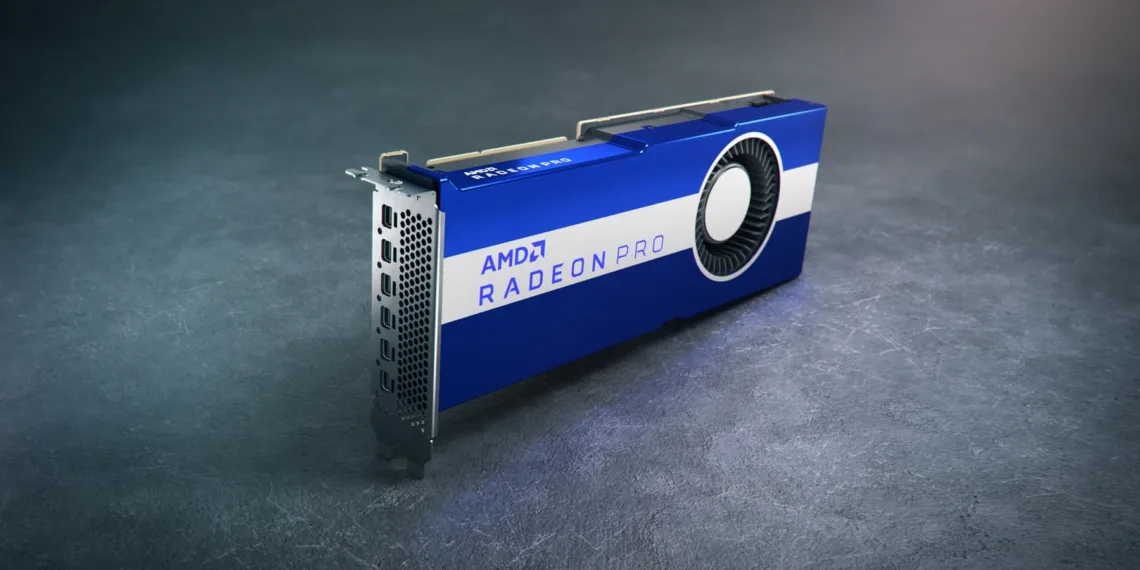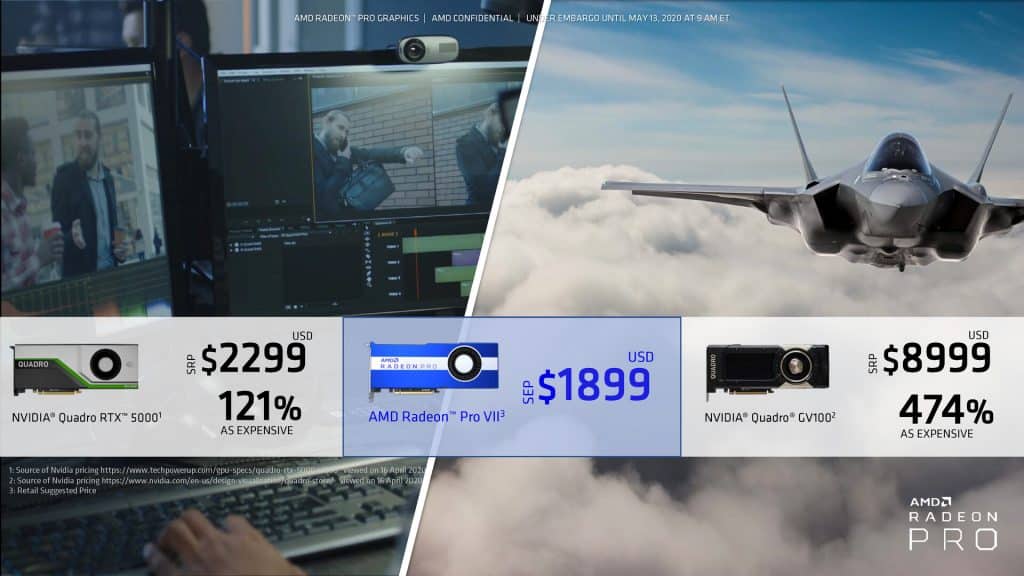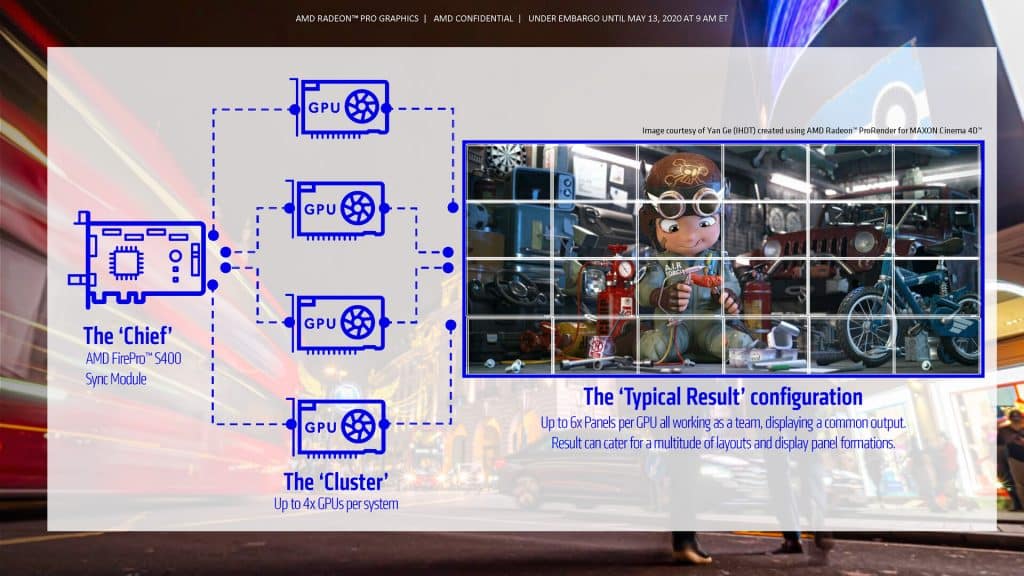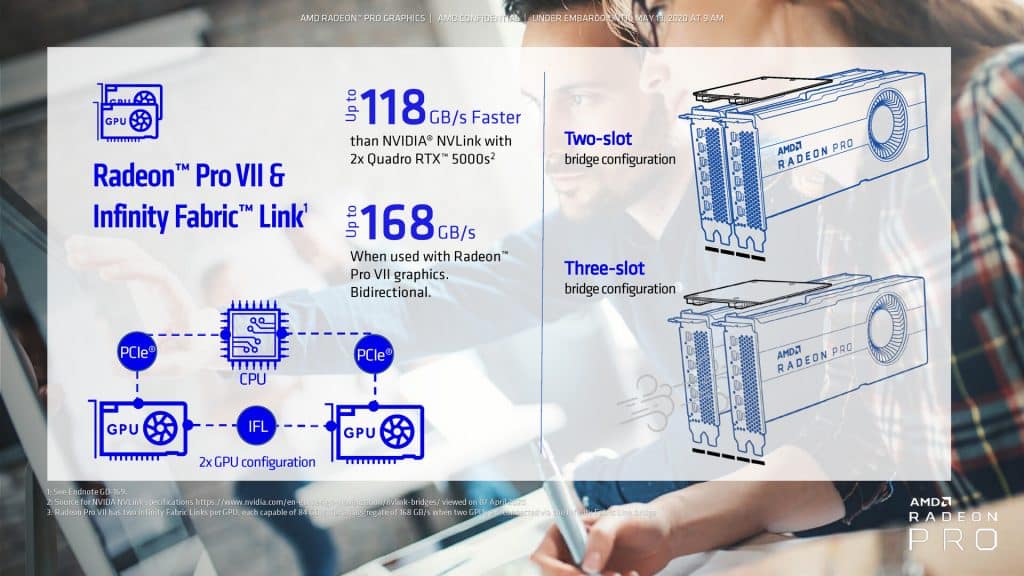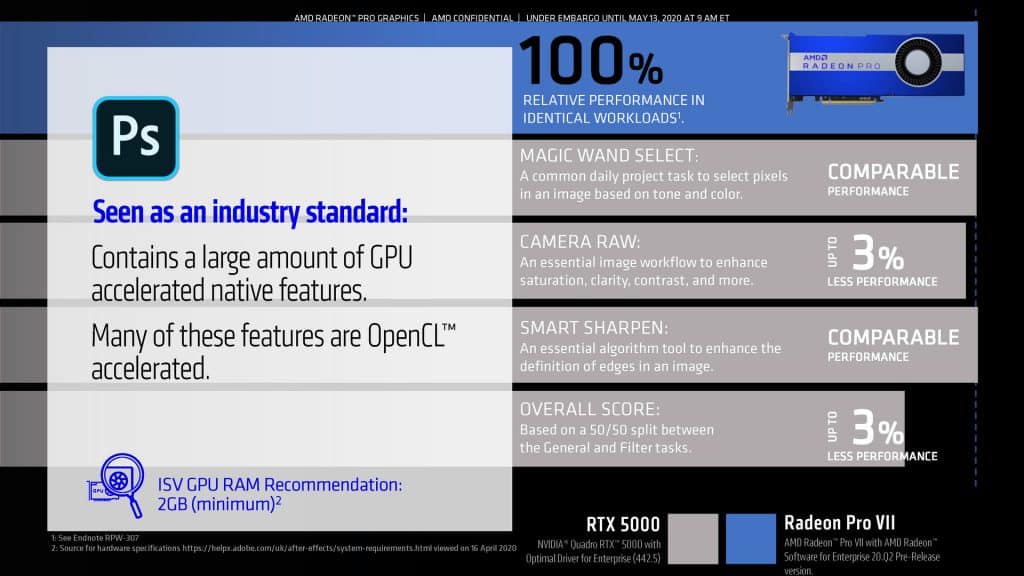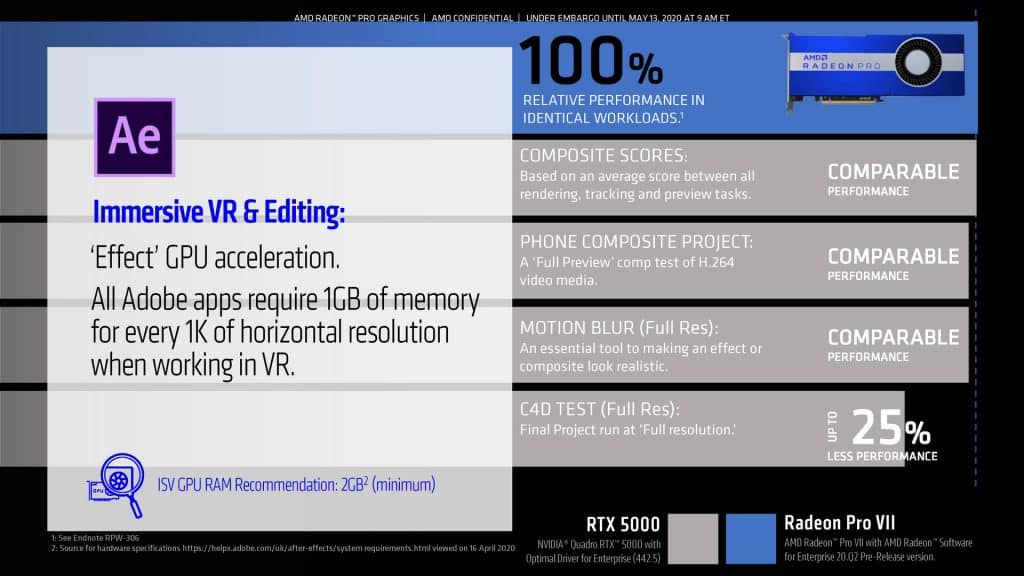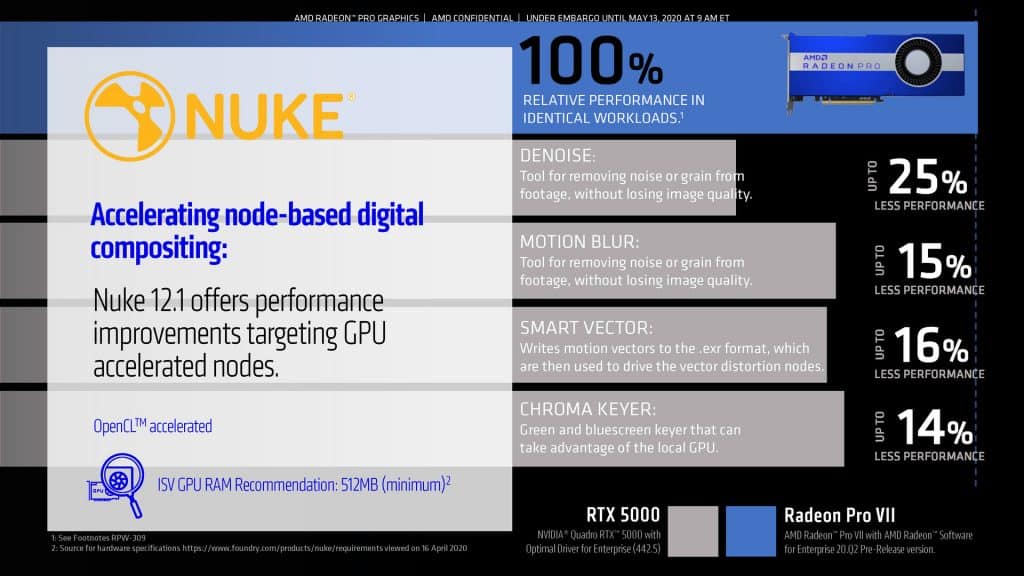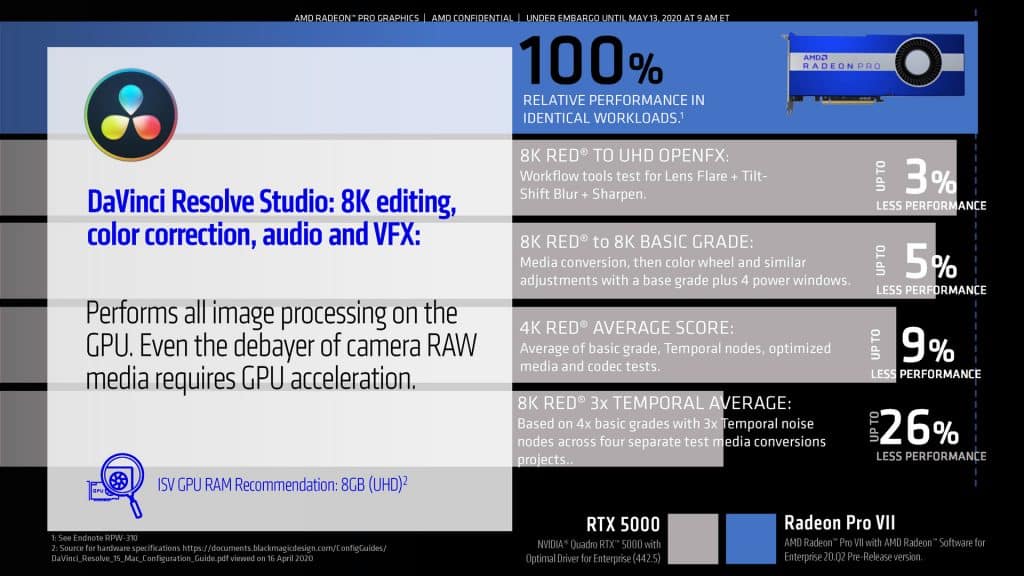The Red team has recently launched a new 7nm based CPU for industrial/professional usage. The new Radeon Pro VII workstation GPU is aimed towards works like 8K video editing, broadcasting and media, computer-aided engineering (CAE).
AMD lacks in the professional GPU front and here NVIDIA shines with some its flagship GPUs like the Quadro RTX 5000 or the even costlier NVIDIA Quadro GV100. AMD says that its new GPU can be the cost-efficient solution to the Quadro RTX 5000 and a great alternative towards the Quadro GV100.

via AMD 
via AMD
As we see in the picture, NVIDIA Quadro RTX 5000 costs $2299 while the AMD Radeon Pro VII costs $1,899, on the other hand, NVIDIA Quadro GV100 costs $8999. According to the infographic shown below, AMD has rightfully compared its new GPU against its competitor’s both the offerings.
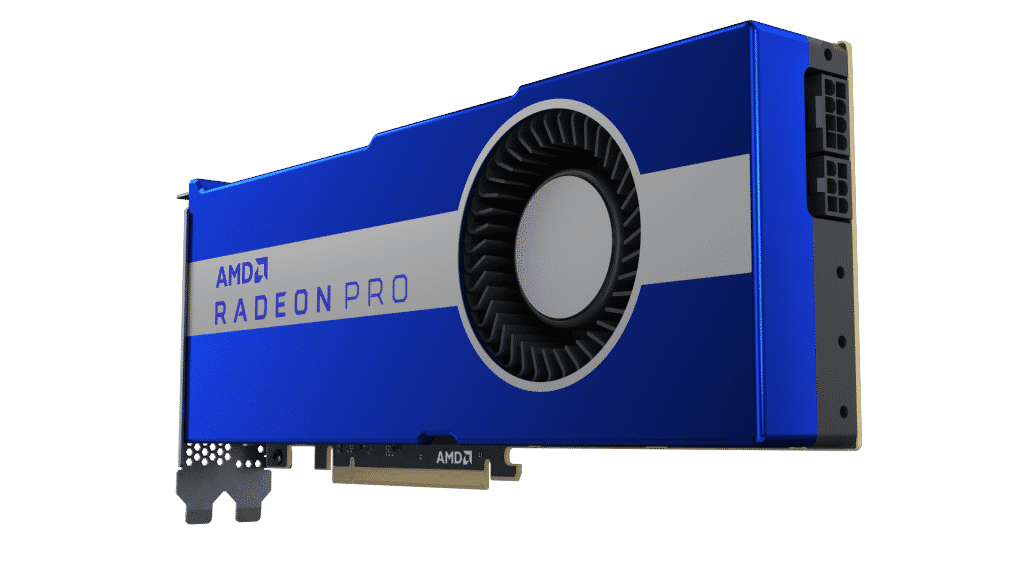
The AMD Radeon Pro VII GPU has a 7nm based Vega 20 architecture with 3840 stream processors and 60 Compute Units. It features 16 GB of HBM2 4096-bit memory with 1TB/s memory bandwidth with support for ECC memory.
The card has a combined Peak Double Precision (FP64) Performance of 13.1 TFLOPs when compared to NVIDIA, the Quadro RTX 5000 which has only 5.6 TFLOPs of FP64 performance and Quadro GV100 having 7.4 TFLOPs of FP64 performance only.
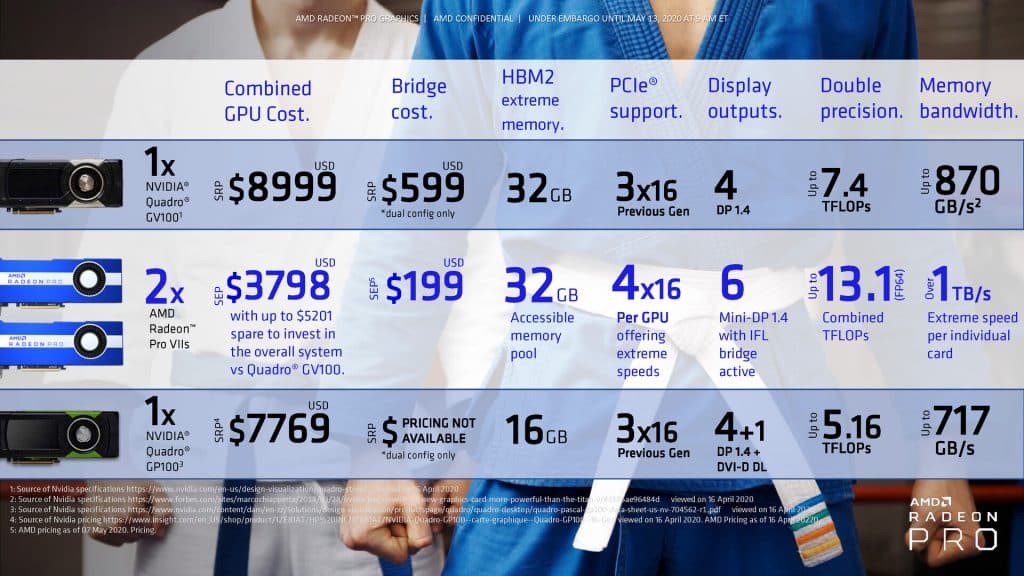
Featuring the latest PCIe gen 4.0, the GPU offers 4 times more PCIe bandwidth and the Infinity Fabric Link gives the ability to directly connect two GPUs together via an ultra-high-speed interconnect, effectively forming a combined pool of GPU memory, which can increase performance and reduce latency.
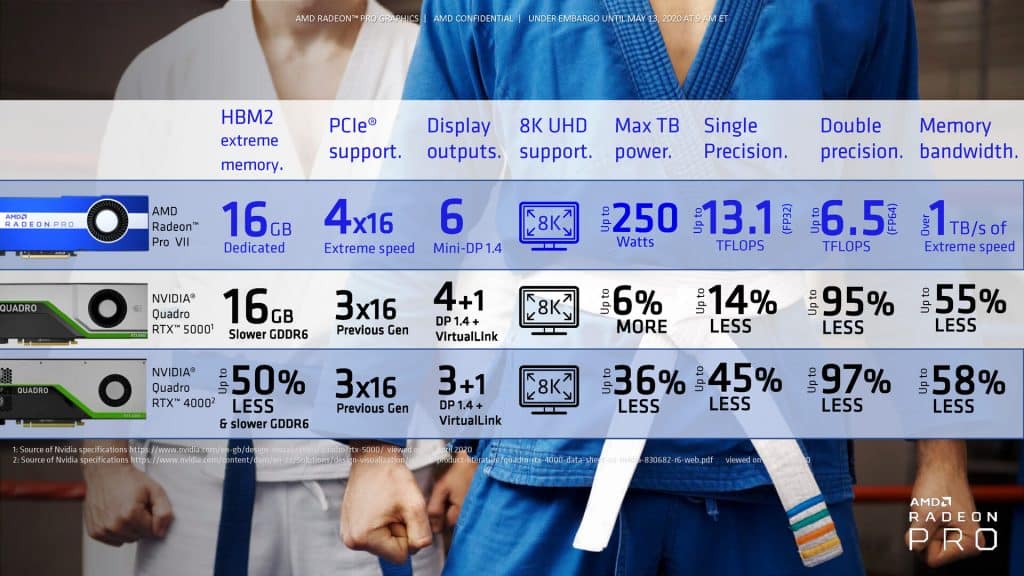
AMD’s Infinity Fabric Link is said to be 118 GB/s faster than NVIDIA’s NVLink between two of its Quadro RTX 5000s, the new increased PCIe gen 4 bandwidth makes things much more faster for the red team.
The AMD Radeon Pro VII has 6x DisplayPort 1.4 along with one 8-pin and one 6-pin connectors. It has a lower TDP of 250 W compared to the 295 W TDP of the previous Radeon VII.
The GPU’s 6 display ports can handle up to six FHD displays together or a single 8K panel. Four of the GPUs can be combined as a cluster and can be synced via an AMD FirePro S400 Sync Module called “The Chief”, this helps to drive up to 24 displays in sync for digital signage or walls.
AMD has comapared the GPU’s performance against the Quadro RTX 5000 in the following images:
Both of GPUs go head-to-head with each other with AMD having a little advantage and most important it keeps cooler than the NVIDIA counter-part. The key performance that the Radeon VII Pro enjoys is during digital compositing in Nuke 12.1 and 8K editing in DaVinci Resolve Studio.
The new AMD Radeon ProRender 2.0 technology is a powerful physically-based rendering engine that enables creative professionals to produce stunningly photorealistic images.
Built on AMD’s high-performance Radeon™ Rays technology, Radeon™ ProRender’s complete, scalable ray tracing engine uses open industry standards to harness GPU and CPU performance for swift, impressive results. AMD even claims that the ProRender 2.0 can reduce render times by nearly half when combined with a Ryzen Threadripper CPU.
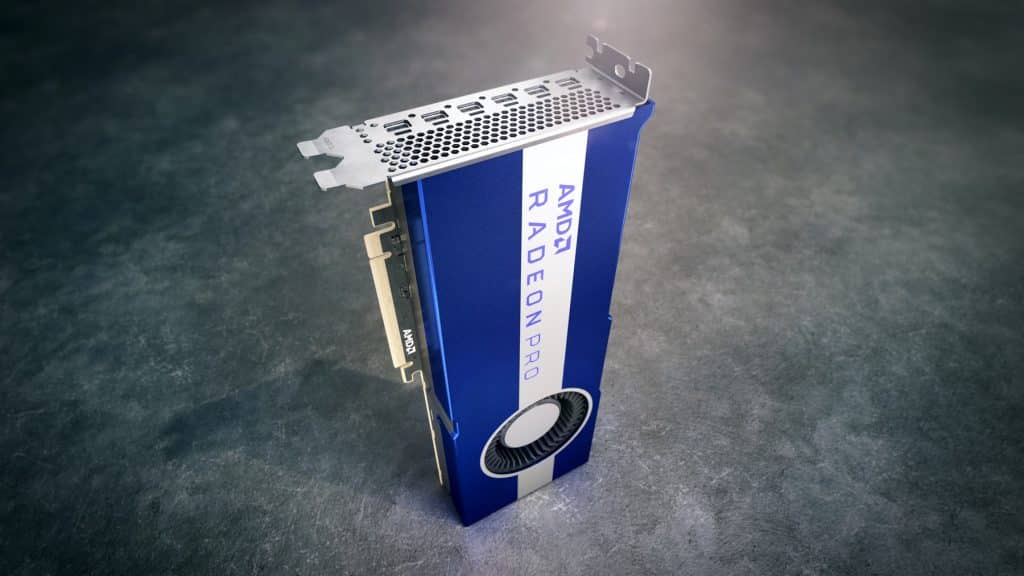
The AMD Radeon Pro VII will make its way to the market from mid-June 2020 at $1,899 (US) whereas, the OEM Workstations powered by Radeon Pro VII are expected to make its way in the second half of 2020. Check out more about the GPU from here.
Sources: AMD, Notebookcheck
Do check out:
😎TechnoSports-stay UPDATED😎

